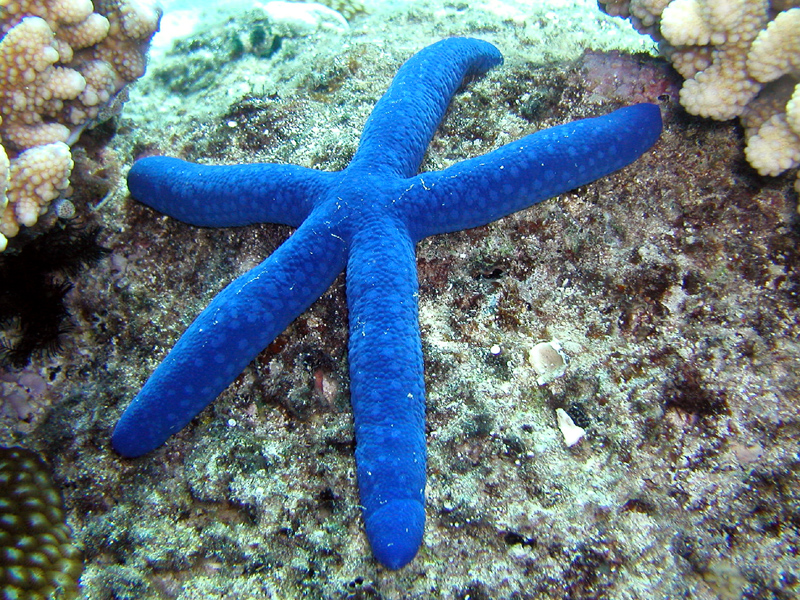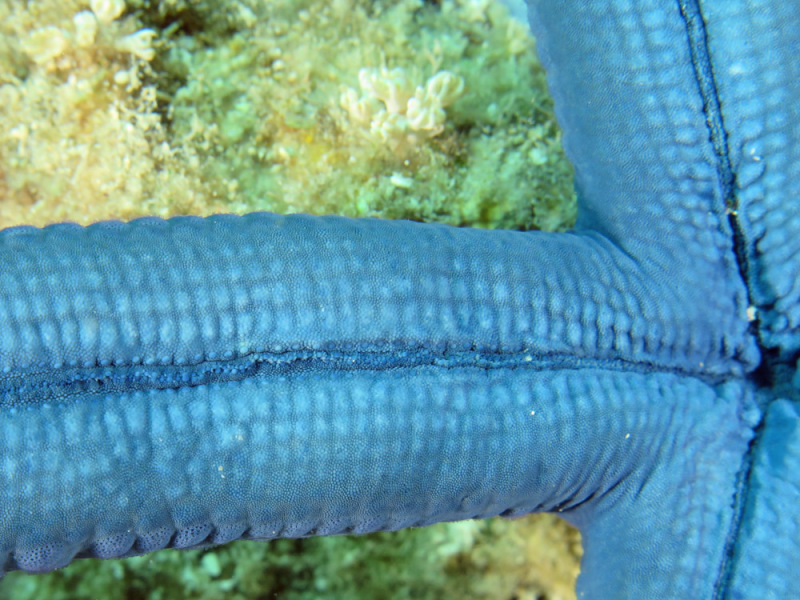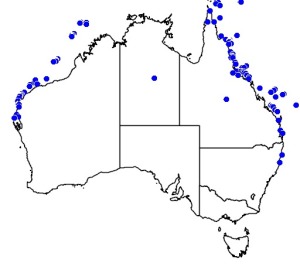
©Lyle Vail and Anne Hoggett: The common blue form of Linckia laevigata on the reef crest near Bird Island, Lizard Island Group. The paler areas are groups of papular pores.

©Anne Hoggett: Linckia laevigata (longest radius about 15 cm) at Watsons Bay, Lizard Island. Enlarge image to see distinctive ornamentation near arm furrow.
Colours
Distinguishing features
This is a common and conspicuous starfish at Lizard Island. The usual colour is bright blue and it grows to a maximum radius of about 22 cm at Lizard Island. There is no other bright blue starfish with which to confuse it.
While bright blue is the most common colour, many other colours (pink, peach, orange, red and brown) have been recorded throughout its Indo-Pacific distribution (Williams, 2000; Humann and Deloach, 2010).
Juveniles are cryptic, living within the reef structure or under slabs of rubble. The smallest individuals found at Lizard Island (longest radius 1.5 cm) are pale to mottled brown with conspicuous dark terminal arm plates. Larger juveniles (to at least 6 cm) are mottled purple/grey. Like adults, juveniles have a single madreporite.
In all species of Linckia, plates on the upper arm surface do not form distinct rows and pores are arranged in groups.
Size
- Up to 22 cm (radius of Lizard Island specimens)
Depth range
- Depth range data is not yet available.
Synonyms
Similar taxa
-
Animalia:
species: Linckia multifora
Smaller, has two madreporites and a brightly mottled colour pattern. -
Animalia:
species: Linckia guildingi
Brown, different arrangement of spines and granules near the arm furrows (see that species for further information).
Distribution
Local abundance
- Lizard Island: This is the most common large starfish in the Lizard Island area.
Web resources
References
References that assist with identification
- Clark, A.M. and F.W.E. Rowe (1971). Monograph of shallow-water Indo-west Pacific echinoderms British Museum (Natural History), London.
- Coleman, N. (2007). Sea Stars: Echinoderms of the Asia/Indo-Pacific Neville Coleman's Underwater Geographic, Springwood, Qld. Australia.
- Marsh, L.M. and J. Fromont (2020). Field Guide to shallow water seastars of Australia. Western Australian Museum, Perth.
- View all references















